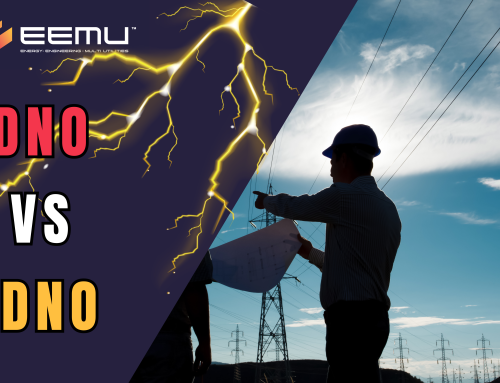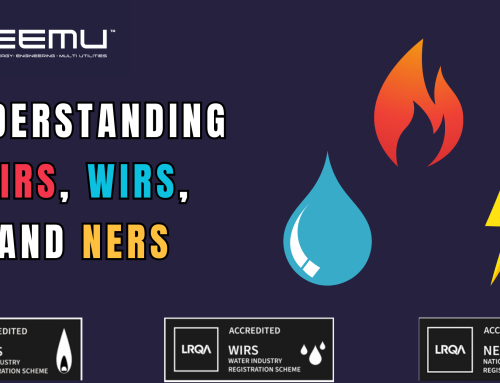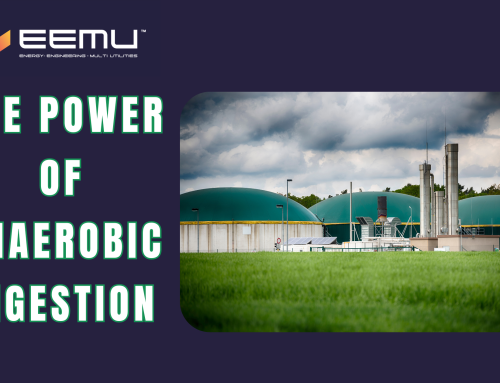Getting a new electricity connection for commercial or industrial buildings is a crucial step that requires careful planning and consideration. Unlike residential connections, commercial and industrial setups have higher power requirements and more complex needs. Here’s a blog to help you navigate through the essential aspects of securing an electricity connection for your business or industrial facility.
1. Assess Your Power Requirements
Start by evaluating your power needs. Commercial and industrial buildings often require a significant amount of electricity to operate machinery, lighting, HVAC systems, and other equipment. This also includes EV charging requirements and any generation. Calculate the total load you will need to ensure that you request an adequate connection. It’s also wise to consider potential future expansions and increased power needs.
2. Select the Right Service Provider
You will have to apply to the operator of the electricity network in your area for a grid connection, this could be an DNO or IDNO. Once you have the grid connection you can choose an ICP to carry out the contestable works instead of the DNO/IDNO, this will reduce costs and timescales. These must be registered as an ICP under LRQA NERS and have the correct scopes to carry out the works.
3. Understand Connection Types and Load Requirements
Electricity connections for commercial and industrial purposes usually involve higher load capacities. Familiarise yourself with the different types of connections, such as single-phase, three-phase, and high voltage connections. Three-phase connections are common in these settings due to their ability to handle higher loads and provide a stable power supply. Larger customers might require a high voltage connection with your own substation.
4. Prepare Necessary Documentation
Gather all required documents before applying. Typically, you’ll need proof of business registration, property ownership documents, and identity proofs of authorised signatories. If the property is leased, you may need a no-objection certificate from the property owner. Ensuring all documents are in order can expedite the application process. You will also require the specifications of the electrical equipment that’s being installed.
5. Application Process
Most DNO`s and IDNO`S offer online application options. Fill out the application form carefully, providing accurate details about your power requirements and the nature of your business. Any errors can lead to delays.
6. Site Inspection and Feasibility Study
After submitting your application, the service provider will conduct a desk top study to determine the load available in the area and define the point of connection. They may also carry out a site inspection and feasibility study. Technicians will visit your property to assess the infrastructure and determine the most efficient way to install the connection. This step is crucial for identifying any additional requirements or modifications needed for a safe and reliable connection.
7. Installation of Electrical Infrastructure
For commercial and industrial buildings, installing the electrical infrastructure can be more complex. This includes setting up transformers, switchgear, and circuit breakers. Ensure that these installations are handled by certified professionals to meet all safety standards and regulations. The grid connection works will be carried out by your ICP, DNO or IDNO.
8. Cost Considerations
Understand the costs involved in getting a new electricity connection. This includes application fees, security deposits, installation charges, and costs for any additional infrastructure like transformers. Also, enquire about the cost per unit of electricity and any demand charges that may apply.
9. Compliance with Safety Standards
Safety compliance is critical in commercial and industrial settings. Ensure that all electrical installations comply with local safety standards and regulations. This includes proper wiring, grounding, and installation of safety devices to prevent electrical hazards.
10. Post-Installation Testing
Once the installation is complete, a series of tests will be conducted to ensure everything is functioning correctly. This includes testing the electrical load, checking for any potential faults, and ensuring the system can handle the required capacity without issues.
11. Activation and Final Approval
After successful testing, the service provider will activate your connection. You will receive a connection agreement detailing the terms of service. Keep this document safe for future reference. It’s also important to establish a good working relationship with the provider for ongoing support.
12. Monitoring and Maintenance
After activation, regularly monitor your electricity usage to manage costs and ensure efficient operation. Schedule periodic maintenance checks to identify and address any issues early, preventing costly downtime.
13. Customer Support and Emergency Services
Ensure that you have access to reliable customer support. Efficient customer service can help resolve any issues promptly, whether a power outage or a technical problem. Knowing that help is just a call away provides peace of mind.
By considering these factors, you can ensure a smooth and efficient process for getting a new electricity connection for your commercial or industrial building. Proper planning and adherence to regulations will help you avoid potential issues and ensure a stable power supply for your business operations. Remember to check with your local service provider for specific requirements and procedures to get the most accurate and detailed information for your area.
At EEMU we can provide you with electricity connections for commercial and industrial buildings. Our grid team has a wealth of experience providing connection solutions across all sectors and areas in the UK. Also, our experienced EPCM team can manage the entire process for you, from preparing and arranging competitive bidding processes to supervising engineering, procurement, construction and commissioning activities, whilst ensuring high standards of quality and health and safety are achieved.
Is it time for you to have a chat with our team? Contact us today, or get a quote!
Follow us on:




